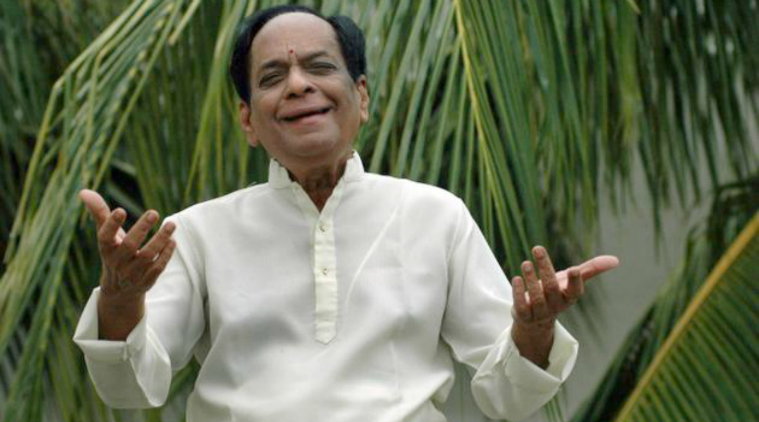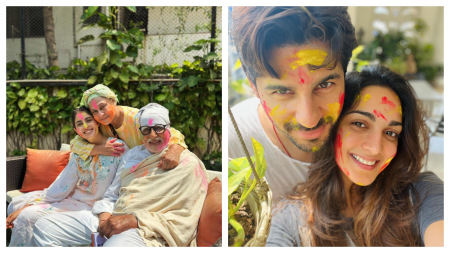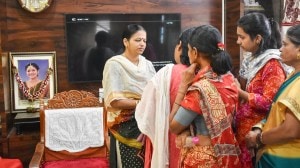- India
- International
Mangalampalli Balamuralikrishna (1930-2016): ‘Scholar, singer, guru… a game changer’
Balamuralikrishna died at his Chennai residence.
 Paluke Bangaaramaayena
Paluke Bangaaramaayena
In the 1960s and ‘70s, fans queued outside concert halls, mostly in Chennai, to listen to Paluke Bangaaramaayena, a 14th century krithi in praise of Lord Ram. In Mangalampalli Balamuralikrishna’s voice, the piece lifted from being just an ode in raag Anandbhairavi and Adi tala to a conversation with one’s soul. With the gamakas in place, the soft yet throaty alaaps finding a chemistry with the tanpura, new historical dimensions were being found and etched.
But it was on the morning of August 15, 1988, that people in other parts of the country began to tune in, humming ‘Isaindhal namm, iruvarin suramum, namadhakum’, the Tamil section of Lok Seva Sanchar Parishad’s famous milestone ‘Mile sur mera tumhara’, telecast on Doordarshan. The endearing M Balamuralikrishna, who sang this part along the Bay of Bengal, became a household name.
ALSO SEE | Remembering legendary Carnatic musician M Balamuralikrishna
On Tuesday, a voice that invoked the purity of the swara, wasn’t bound by conservative classical traditions, that traversed three octaves with remarkable ease, went back to the ocean it came from. Balamuralikrishna died at his Chennai residence. He was 86.
“There are musicians who flow along the current of the wave that music is. But there are those who create a change in the wave.
ALSO | Carnatic music legend Mangalampalli Balamuralikrishna dead
Balamuraliji was the latter. By far,” said veena player and Lalgudi Jayaraman’s niece Jayanthi Kumaresh.

She calls him “a prolific scholar, singer, guru, but most of all a game changer” for bringing the difference in the way people looked at Carnatic music. Balamuralikrishna threw light on voice culture and pronunciation and didn’t go by the beaten path of singing the already composed krithis. He created his own compositions and sang them. “There is classical music, and then there is the Balamurali music. He had his stamp on every syllable he created,” Kumaresh said.
Carnatic vocalist Aruna Sairam was always awed by the krithis created in unknown ragas, sometimes his own ragas. “His was a free mind — his music wasn’t pocketed into any particular set-up. Also, he was aware of the knowledge he was sitting on. It was because there was his childlike approach that made everything sound effortless. Carnatic music has lost a pillar, a giant,” Sairam said.
Born in Sankaraguptam in Andhra Pradesh to parents who were musicians, Balamuralikrishna began learning Carnatic classical music under Parupalli Ramakrishnayya Pantulu. He was soon declared a child prodigy after his concert at the age of seven at Thyagaraja Aradhana, Vijayawada. He turned composer at 14 and knew all the 72 melakartha ragas, which form the backbone of Carnatic classical system. And thus began a journey which reached a point where even the common man could appreciate his music.
Kuchipudi legend Raja Reddy, who has danced to a host of thillanas by Balamuralikrishna, said that it is difficult to come to terms with losing such a scholar. “It was enriching to dance to his thillanas — an artiste contributed so beautifully to my art form,” he said.
Watch the song “Mile Sur Mera Tumhara” here.
What was interesting about Balamuralikrishna was that he approached music beyond the externally constructed limitations. Tradition was merely the grammar of music and not something that constrained him. One could not box his music into a Hindustani music or Carnatic music. Which is why he recorded Tagore in Bengali, sang in French, tried jazz and did regular jugalbandis with Kishori Amonkar and Hariprasad Chaurasia.
Then there was the iconic jugalbandi with Bhimsen Joshi. While Joshi was a fast-cars fanatic, Balamuralikrishna enjoyed casinos. Musically, there was more common ground. The two knew they were geniuses. “His was a life dedicated to music. He was a genius in the true sense of the word. Today, we apply the word genius far too easily. But he was one of those few who deserved the nomenclature,” says Sairam.
Bharatanatyam exponent Yamini Krishnamurthy remembers her friend fondly. “He came to my place in Adiyar and we spoke for hours. I even performed to some of his compositions. The music came to him with great force.”
Photos
Apr 26: Latest News
- 01
- 02
- 03
- 04
- 05










































